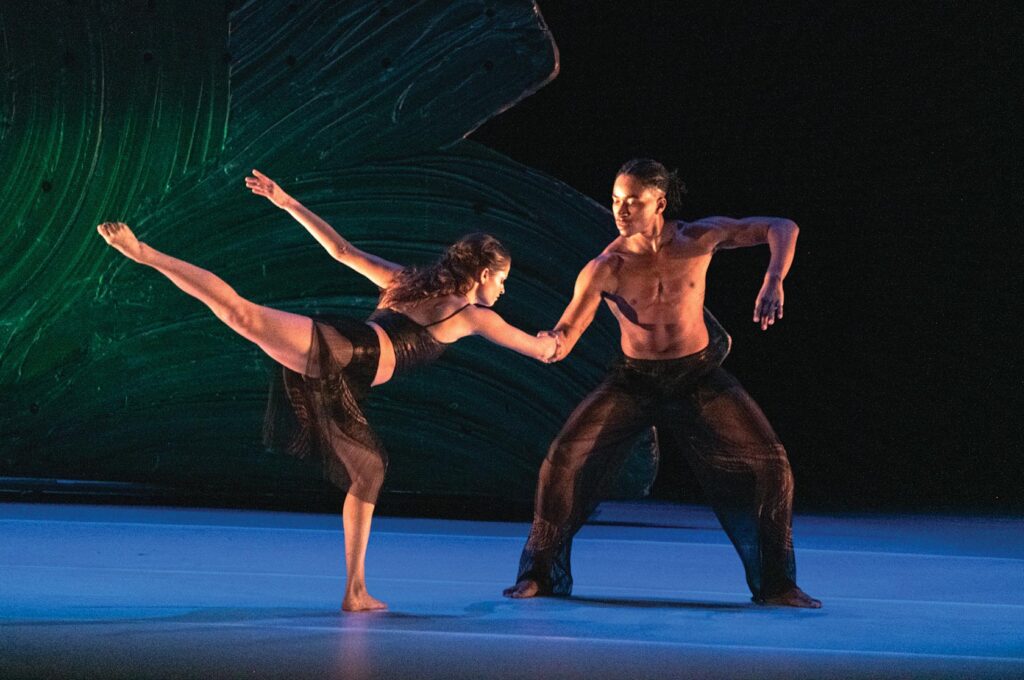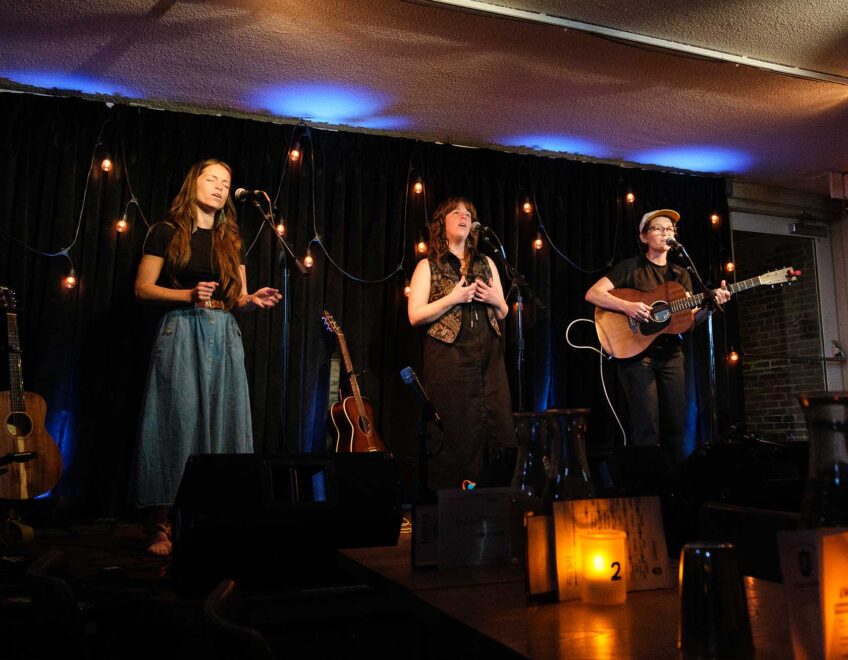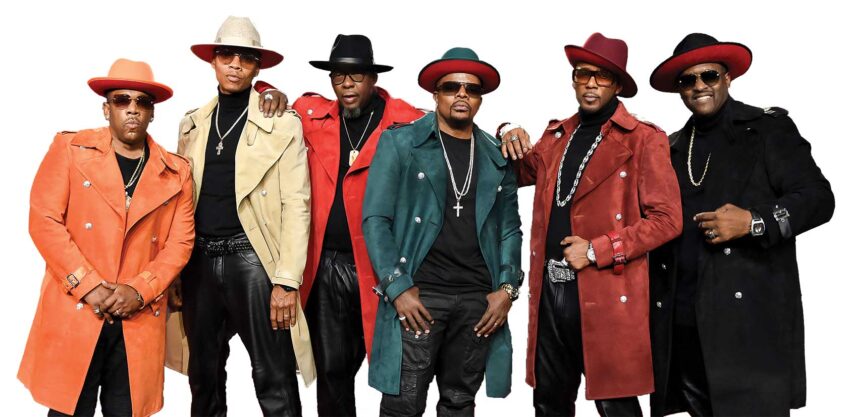
Back in Boston for the first time since 2013, the Paul Taylor Dance Company made a sensational return this month with three shows at the Boch Center Shubert Theatre, presented by the Celebrity Series of Boston.
Its current dancers are every bit up to the legendary rigor and expressive athleticism of the New York-based company Paul Taylor founded 69 years ago, now led by Artistic Director Michael Novak, a former company member chosen by Taylor before his death in 2018. Taylor dancers include Madelyn Ho, MD, Harvard Medical School ’18, who while a student performed with Boston’s own Urbanity Dance.
The company presented its recently commissioned “Somewhere in the Middle” (2022) by Amy Hall Garner; and two classics by Taylor: “Brandenburgs” (1988) and “Company B” (1991). Each mined dualities within human experience, intertwining high-energy ensemble segments with poignant solos, trios or quartets. Light itself became a set in staging these dualities, as fashioned by the company’s renowned lighting designer, Jennifer Tipton.
“Somewhere in the Middle” shifted between sunny playfulness and introspection during its six segments, performed by eight dancers to recordings from the mid-century American jazz canon. A pastel palette dominated the costumes by Mark Eric as well as Donald Martiny’s cloud-like overhead panels, which became distracting as they rolled in and out with each change of scene.
Swinging to big band classics, dancers mirrored one another, rippling limbs in angular arrays, and skimmed across the stage in playful, linear formations as well as solos that embodied the keyboard grooves of Count Basie and Duke Ellington. Switching to black attire, Maria Ambrose and Devon Louis performed to an exquisite, blues-infused solo of “Lucky to Be Me” by pianist Bill Evans. Enfolded in a nimbus of light on an otherwise darkened stage, the pair echoed the ballad’s melodic refrain with balletic arcs and, with pauses, reflected its moments of stillness.

Somewhere in Middle by Amy Hall Garner performed by Madelyn Ho with (left to right) Devon Louis, Lee Duveneck, Austin Kelly and John Harnage. PHOTO: Ron Thiele
For the Taylor works, the ensemble was expressively outfitted by Santo Loquasto, one of the country’s foremost stage designers. In “Brandenburgs” (1988), nine dancers in elegant black and gold body suits executed exultant, formal and somewhat repetitive patterns that mirrored the formal structure of Johann Sebastian Bach’s Brandenberg Concertos Nos. 6 and 3. In a spellbinding interlude, Madelyn Ho, Maria Ambrose and Eran Bugge joined a bare-chested John Harnage, exuding magnetism, for an intimate quartet of slow, sculpted movements.
The 13-member cast of “Company B” (1991), uniformly clad in khaki hues that evoked both military and everyday attire, performed to a World War II-era hit parade of the decade’s top vocal group, the Andrews Sisters. Sporting bobby sox, the dancers moved with manic glee to a hyper-kinetic sampling of polka, lindy and jitterbug styles. In counterpoint, Alex Clayton’s astonishing acrobatic solo to the calypso megahit “Tico-Tico” was a fierce statement of self-esteem. In a comic “Oh Johnny, Oh Johnny, Oh!” seven women pursued a dorkily bespectacled Lee Duveneck. As the “Boogie Woogie Bugle Boy (of Company B),” Harnage rendered the bugler’s ebullience and, with a split-second tumble, his death. Featured in all three works, Ho in this piece titillated the cast’s six men with a sassy calypso in “Rum and Coca-Cola.” Meanwhile, in the opening and concluding scenes of “Company B,” the backdrop showed a slow-moving row of figures in silhouette pantomiming soldiers marching and dying on a distant battlefield.







